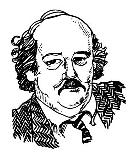(Syndicated to Kansas newspapers April 21, 2014)
 Kansas tax revenues appear to have bottomed out after the massive income tax cuts of 2012.
Kansas tax revenues appear to have bottomed out after the massive income tax cuts of 2012.
That might be the biggest news from the latest Consensus Revenue Estimate released last week. The consensus reports are released twice a year, generally in April and November.
It took a full tax year of the cuts—remember, almost 200,000 Kansans no longer pay state income tax if their small businesses or corporations are structured just right—to establish that baseline of revenues the state can expect to receive this year and next.
While that discussion of tax rates and revenues is pretty esoteric, we’re probably at the place now where we can actually start looking at what Kansans expect from their state government.
The estimate of revenues, after falling 6 percent (that’s about $320 million) in the current fiscal year which ends June 30, is now predicted to rise by a half-percent, or about $32 million, in the fiscal year which starts July 1, after all the under-the-sheets shifting and juggling of money among funds are done.
The latest estimate is important because we’ve had a full tax year of the new lower rates, and presuming that everyone has adjusted his/her withholding, we probably are at the point where any growth in revenue will be the result of more people working or higher salaries or Kansans taking their tax savings and spending it on taxable things, ranging from groceries to smokes to paint for their houses.
The state now has a pretty firm revenue base from which to work.
If there ever was a time that the state has a chance to actually study what it needs to do for Kansans and what it wants to do for Kansans and what it doesn’t believe Kansans need—or will miss—we’re there.
Lawmakers have spent the past two years paring the state budget and now they’re at a point where anything new will have to have an identifiable source of money to pay for it. That ranges from all-day Kindergarten to more Kansas Highway Patrol officers to aid for communities to increase their populations.
Politically, Republican Gov. Sam Brownback says his tax-cut plan is working—or will at least through the fall campaign. His goal, of course, is eventually to eliminate state income taxes, freeing up Kansans to spend that tax savings on expanding businesses, new technologies and maybe just spending more money on things the state taxes.
His likely Democratic challenger, Rep. Paul Davis, D-Lawrence, says the state has cut funding for important services to absorb those income tax revenue losses. He believes this reduction in revenues means the state can’t invest in education that will be vital to new businesses, jobs and population growth.
Financially, the state will make it through the campaign season, and we’re betting neither Brownback nor Davis is going to start talking on the campaign trail about raising taxes so the state has more money to spend on things voters might want.
